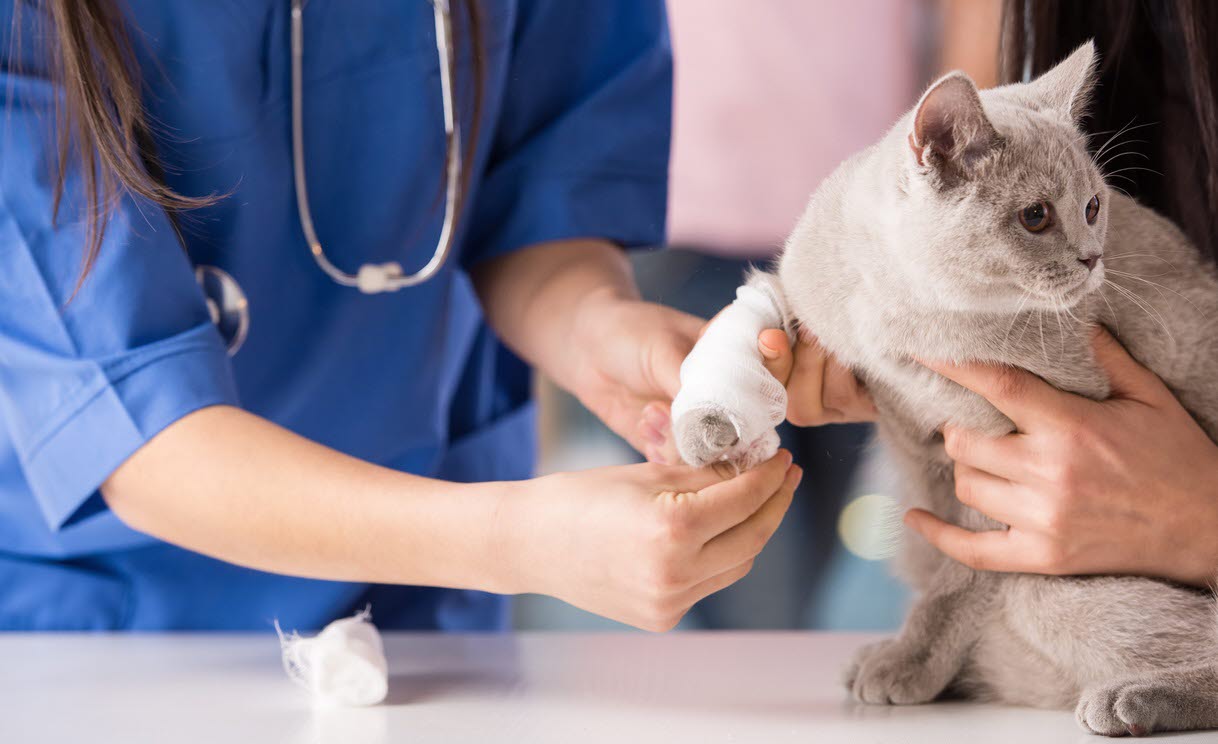Pet first aid

As with human family members, it can really help to have some basic first aid skills for our pets! First aid involves the initial medical support of your pet if they’re hurt or unwell, with the aim of stabilising any injuries until they can be assessed by your regular veterinarian, or closest after-hours emergency veterinarian.
What first aid supplies should I have in my house?
It can help to have the following supplies available:
- Sterile wrap bandages
- Cling film
- Sterile absorbent wound pads - both adhesive-edged and non-adhesive varieties can be useful
- A bottle of sterile saline for flushing eyes or wounds
- Manuka honey - higher ‘Unique Manuka Factor’ (UMF) grades have greater antibacterial effectiveness
- An Elizabethan collar - to prevent your pet from chewing any dressings
We recommend asking your veterinarian for guidance on putting together a first aid kit for your pet.
Basic wound care
If your pet has injured themselves and has a wound, they should see a veterinarian for treatment as soon as possible if the wound is:
- Dripping blood
- Deep, extensive or 'flapping open'
- A dog or cat bite wound
- Infected (red, oozing discharge or smelly)
- Involving your pet’s eye
Prior to transport to a veterinary clinic, you can manage bleeding wounds as follows:
Leg wounds can have an absorbent, non-stick pad placed over the top, with a bandage or cling film wrapped over to apply light to moderate pressure. Ensure you can still place a finger underneath the dressing, so it’s not too tight.
Body wounds can sometimes be covered with an absorbent dressing or towel, secured with cling film gently wrapped around your pet’s body. It's important to ensure the cling film is not constricting their breathing. Otherwise, press and hold an absorbent dressing over the wound for four to five minutes, and limit your pet’s movement.
Severe injuries
If you suspect your pet may have broken bones, or they seem dull or weak after their injury, it’s vital that they’re assessed by a veterinarian as soon as possible.
Animals in pain can lash out when handled, so it’s safest to gently wrap your pet in a thick blanket or quilt prior to lifting them into the car. If possible, try to secure them safely in a travel crate, or on the backseat with a pet seat belt attachment.
Avoid the temptation to administer any pain relief to your pet that has not already been prescribed for them by a veterinarian, as inappropriate types or doses of pain medications can cause liver or kidney damage.
Lastly, when transporting your pet to the veterinarian for emergency care, try to phone the clinic in advance to inform them of the situation and your estimated arrival time. This way, they can make preparations to help you and your pet as soon as possible!
